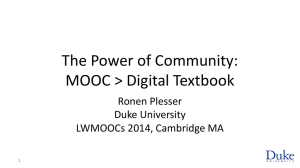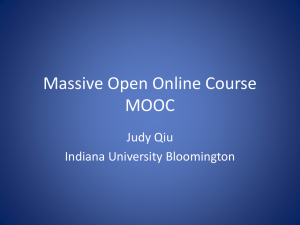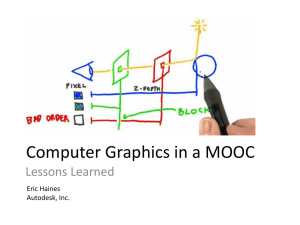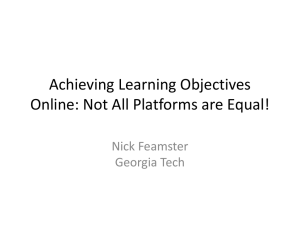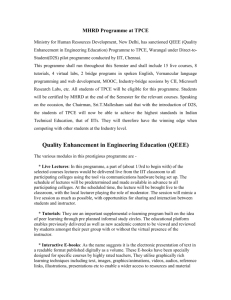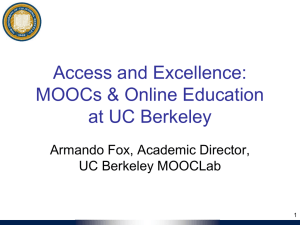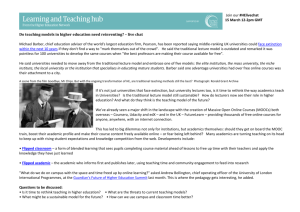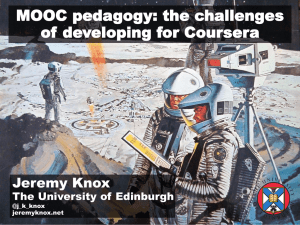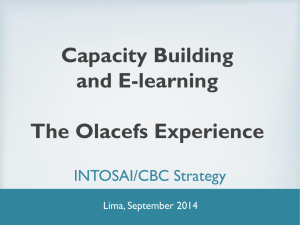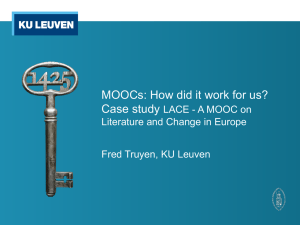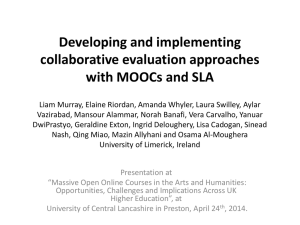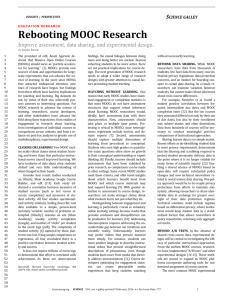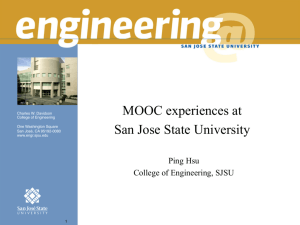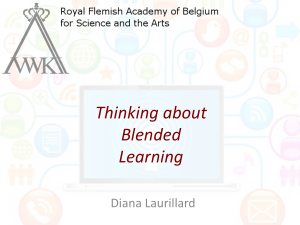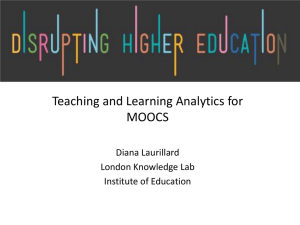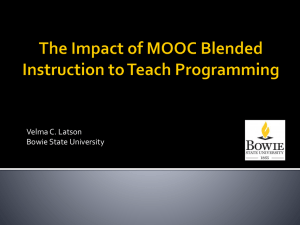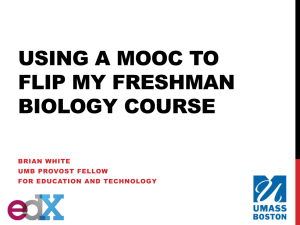Document
advertisement
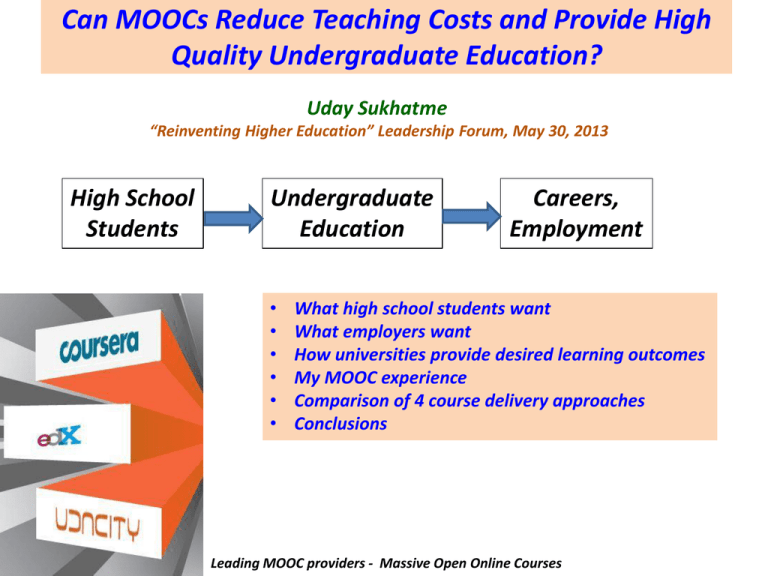
Can MOOCs Reduce Teaching Costs and Provide High Quality Undergraduate Education? Uday Sukhatme “Reinventing Higher Education” Leadership Forum, May 30, 2013 High School Students Undergraduate Education • • • • • • Careers, Employment What high school students want What employers want How universities provide desired learning outcomes My MOOC experience Comparison of 4 course delivery approaches Conclusions Leading MOOC providers - Massive Open Online Courses What high school students want • • • • • • • • • High quality programs/courses Learn new things, intellectual excitement Low cost education New friendships with students/faculty Internships, real-life experiences Become an independent adult Degree and future careers/employment Community, campus, social life Convenience, flexibility Dreams for a bright future What employers want (undergraduate learning outcomes) • • • • • • • Communication skills (verbal, written) Quantitative reasoning Critical thinking Integration and application of knowledge Intellectual depth, breadth, adaptiveness Understanding society and culture Values and ethics Employers, employees How universities provide desired learning outcomes • Courses deliver disciplinary content + high impact co-curricular experiences (RISE = Research, International study abroad, Service learning, Experiential learning) • Courses have interactive aspects like recitations, labs, seminars, discussions, but also much less interactive aspects like large lectures. • Interactive aspects of learning are best handled in face-to-face interactions. • Videos of lectures would be an effective way of saving money, as well as freeing up time for other learning activities like the flipped class room. • Technology allows one to progress from a paper text, to e-text, to e-texts with embedded lectures and animations. • Since the cost of higher education is a major concern, ask if MOOCs can be used to reduce educational costs? Less interactive learning (large lectures) Interactive learning (undergraduate research) My MOOC experience edX Stat 2.2x UC Berkeley General Setup • Free 5-week course in probability – second of a 3-course sequence • Professor, graduate assistant, undergraduate student + edX infrastructure • Courseware (video lectures, 8 homework sets, exams – all open book) • Discussion forum (student questions, comments) • Wiki (e-text, formulas) • Progress (homework 30%, midterm 20%, final 50% - passing score is 40%) • Computer graded questions – numerical answers – 2 tries • Course Information (from Statistics 2.1x) - 50K students from all countries; 10K took exams; 8K completion certificates. Curiosity and free enrollment partly responsible for low completion rate. My MOOC experience Observations • Technology worked very well, but not for all students - frustrating • Online lectures very well-delivered – excellent content • Can go over lecture multiple times – pause, slow and fast speeds • Convenience of working at any hour – very good online text • Instant feedback on “course standing” was an encouragement • No feedback on mistakes made in homework and exams • Discussion forum was very low quality – went on tangents – incorrect, unreliable responses from fellow students – philosophical digressions – professors, staff rarely participated – same students responded - no bonding/friendships formed - no advising services • To do really well, needs self-motivation and hard work, but passing a class with 40% score is not a big barrier • Academic honesty difficult to control A lonely experience Comparison of 4 course delivery approaches Consider an introductory physics course, delivered via 4 approaches. Just look at the theoretical learning component. The laboratory learning component is not included here. Teaching hours per week Expected academic value for motivated student Teaching approach Classroom lecture Recitation Preparation Expected cost High ability students Average students Standard 3 1 12 16 Very good Good Flipped classroom 0 3 9 12 Excellent Very good Facilitate an available good MOOC course 0 2 6 8 Very good Good Give credit for completed MOOC 0 0 1 1 Good Modest Cost reduction can be substantial - will be very discipline and course-dependent. Conclusions • MOOCs do not help develop the people skills or provide many of the in depth learning outcomes which employers and high school students are seeking. • Online lectures can help reduce costs by substituting for the less interactive aspects of teaching in certain courses, particularly large lectures. They do offer convenience for students – savings in time and travel. • Hybrid teaching approaches which make judicious use of high quality MOOC lectures as enhanced etexts will reduce costs while maintaining good learning outcomes for disciplinary content. The best of both worlds at lesser cost
